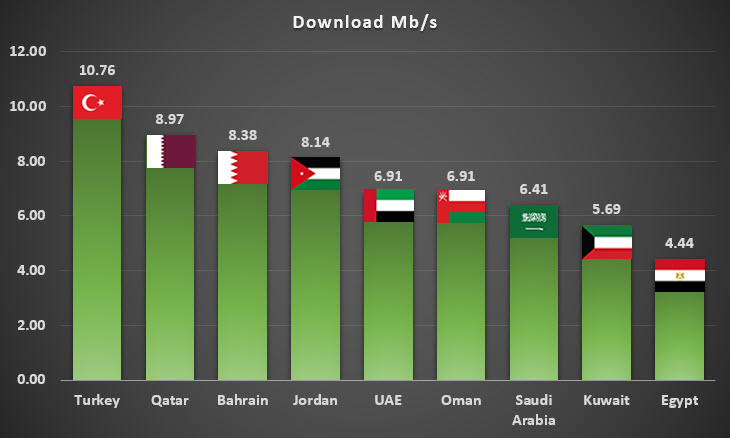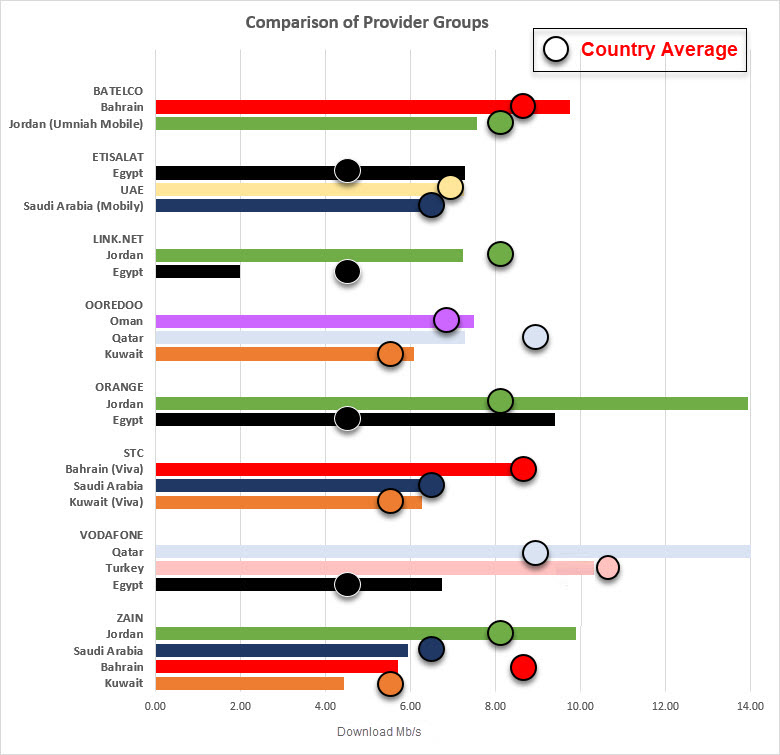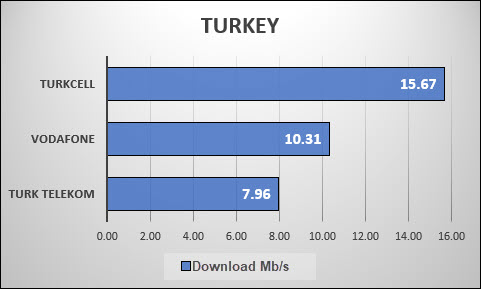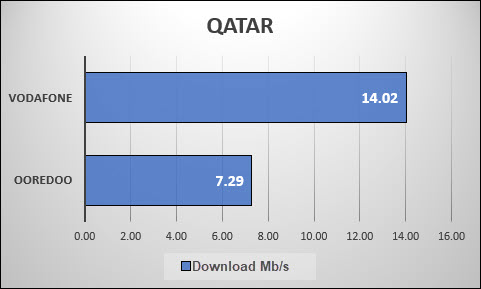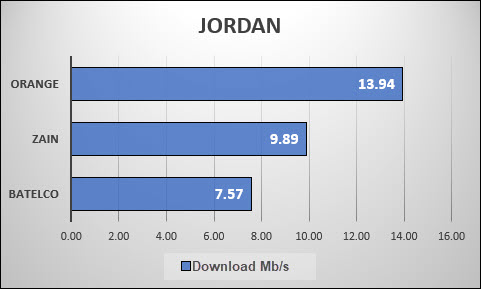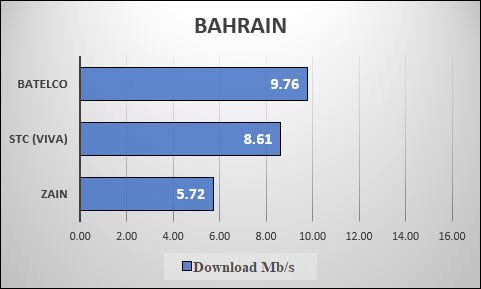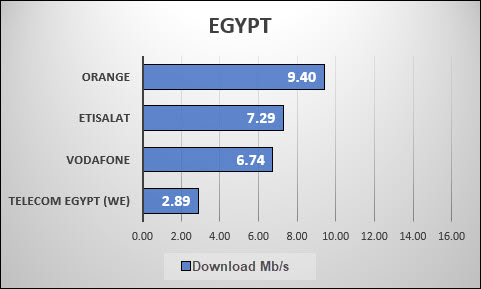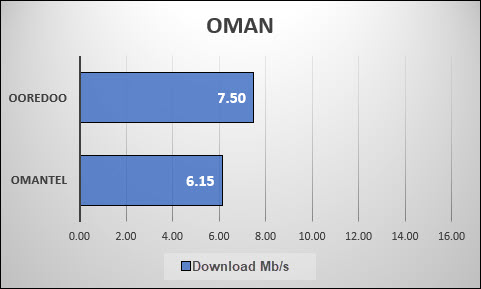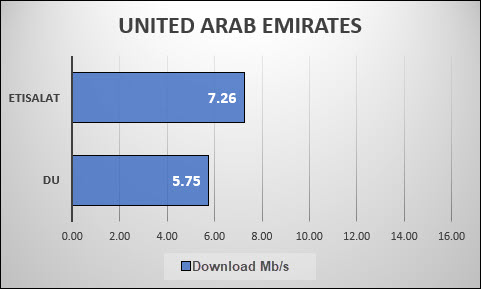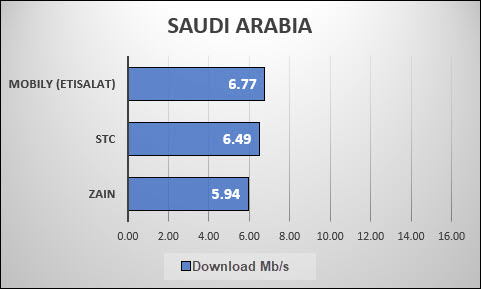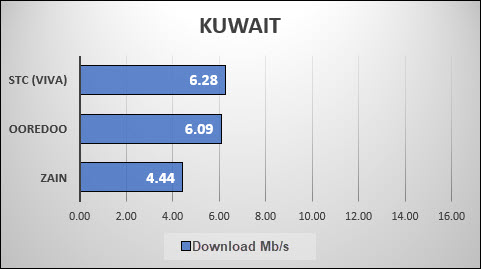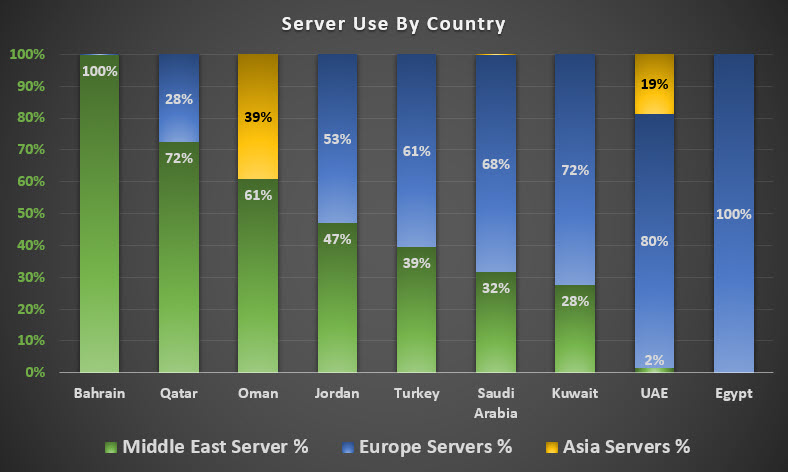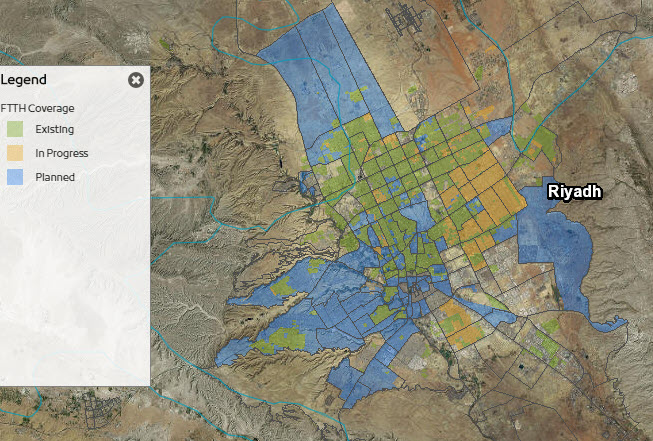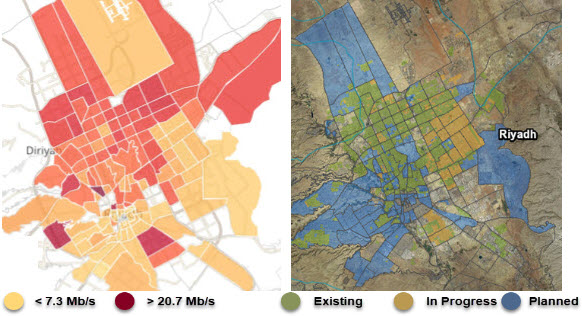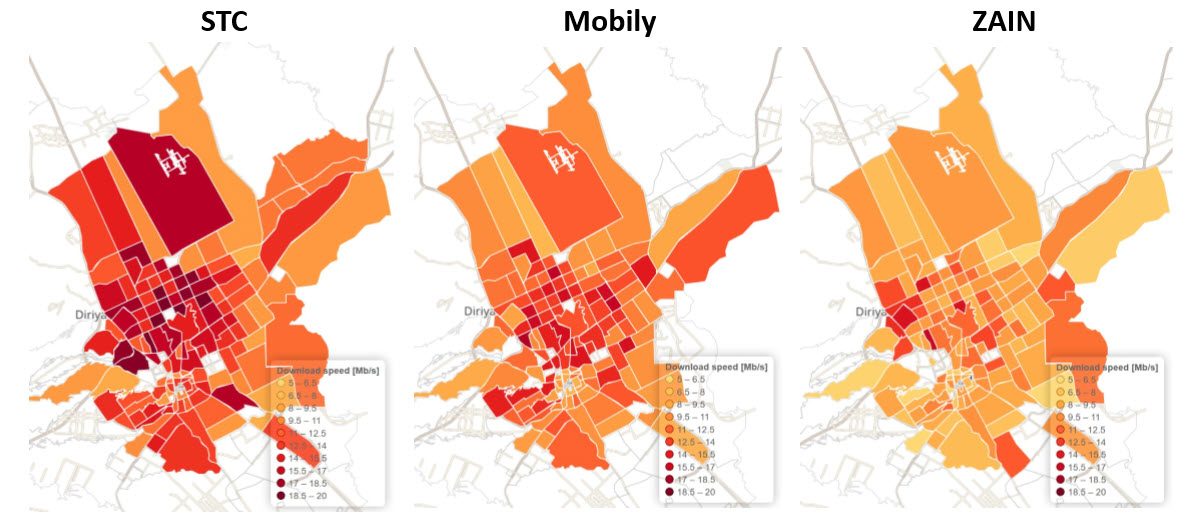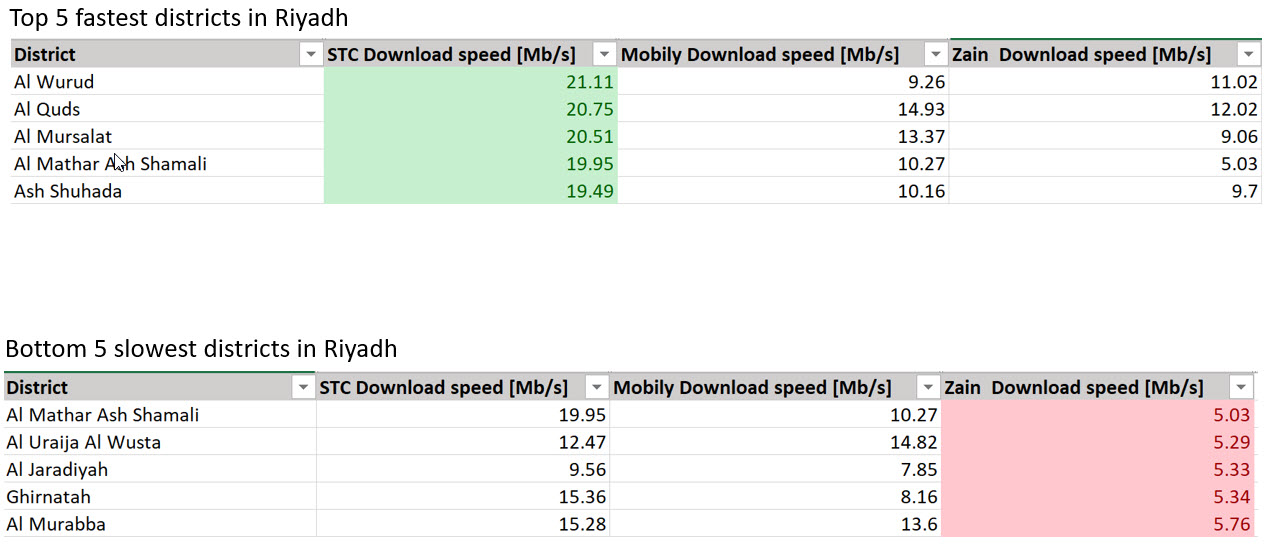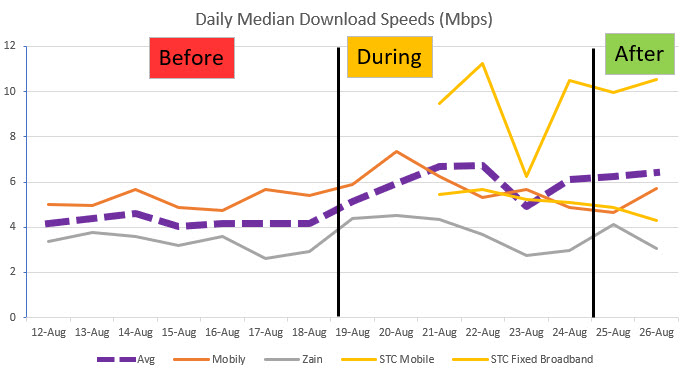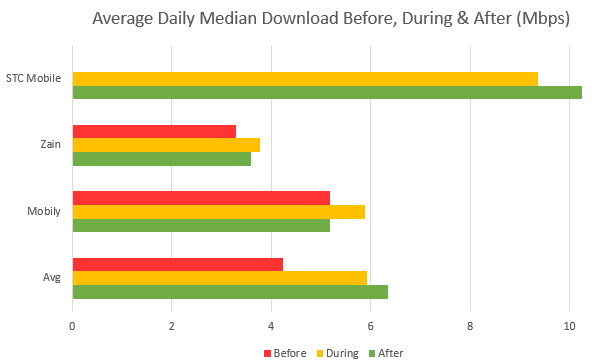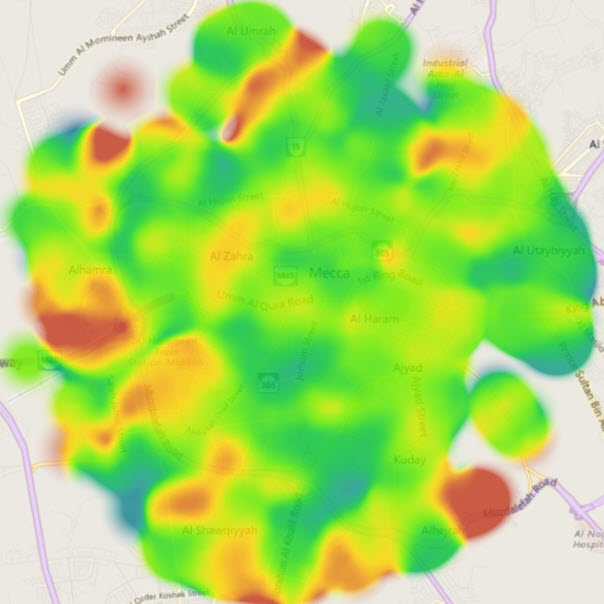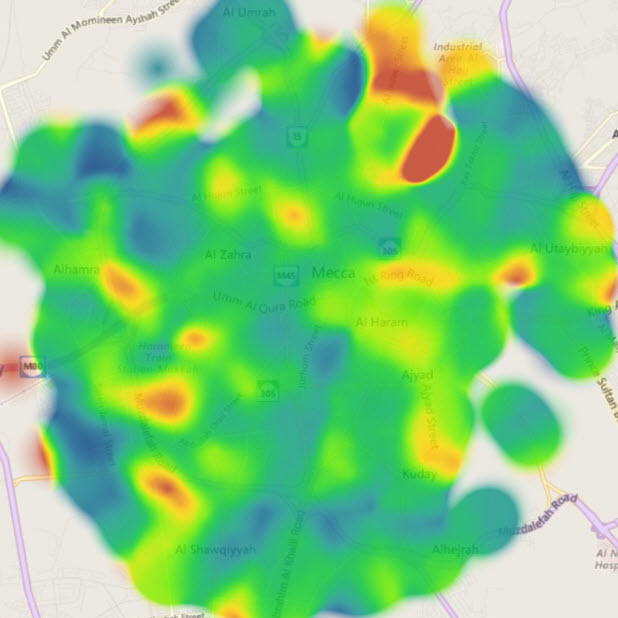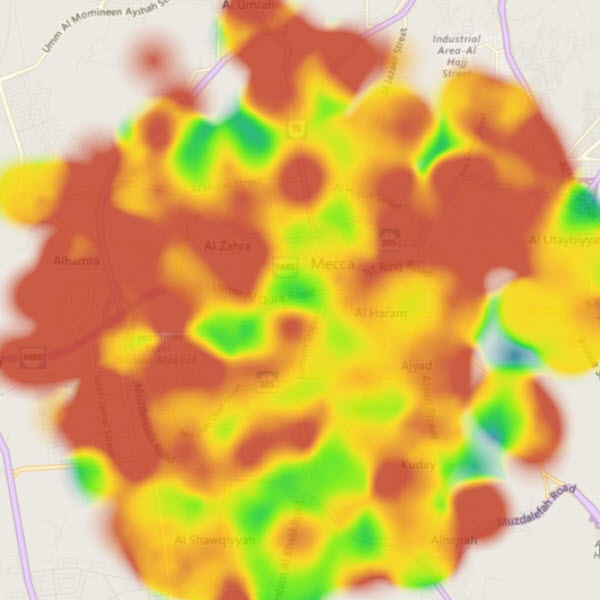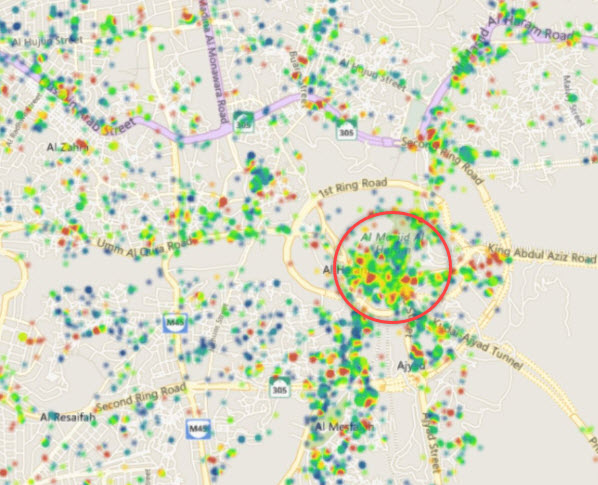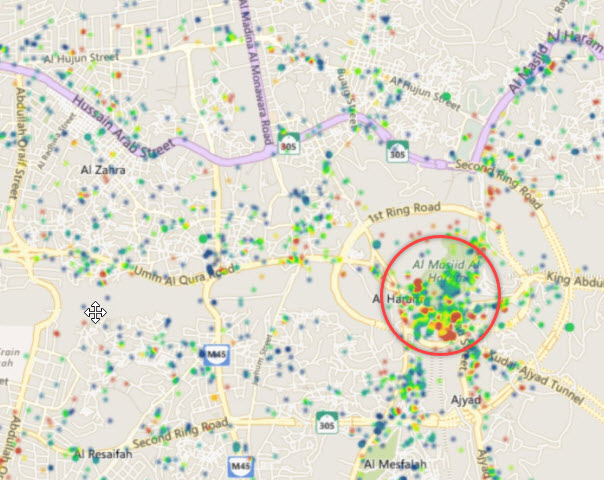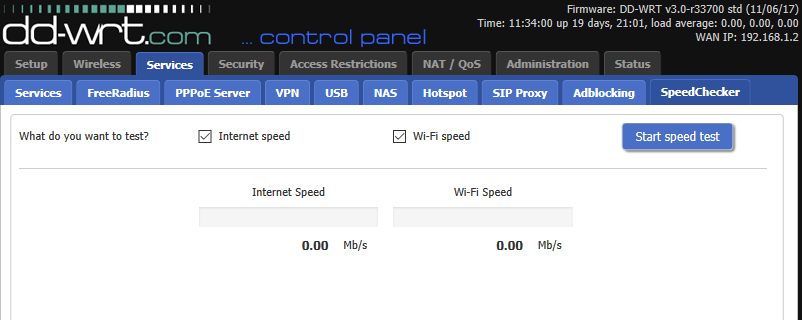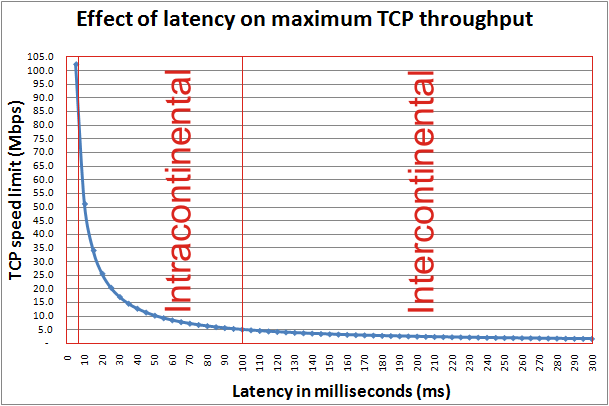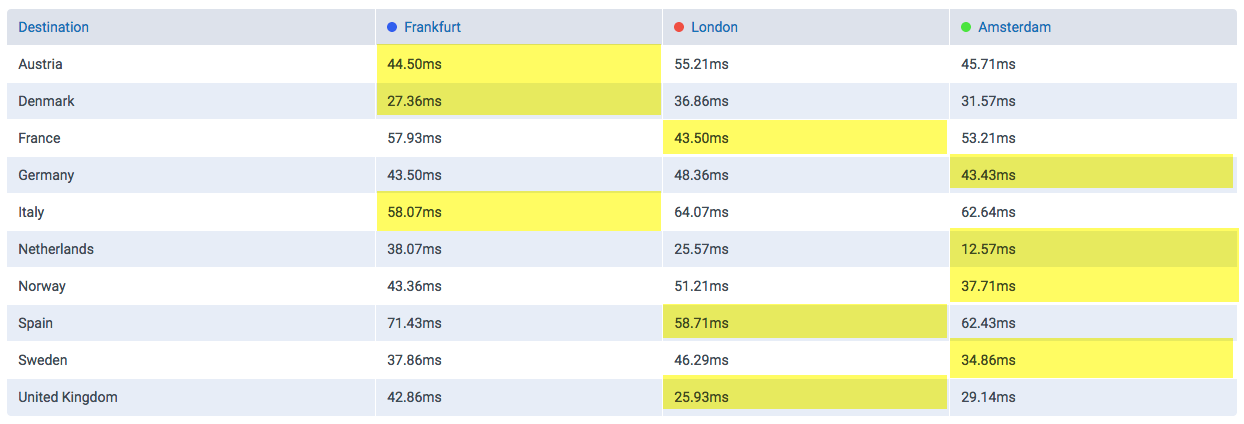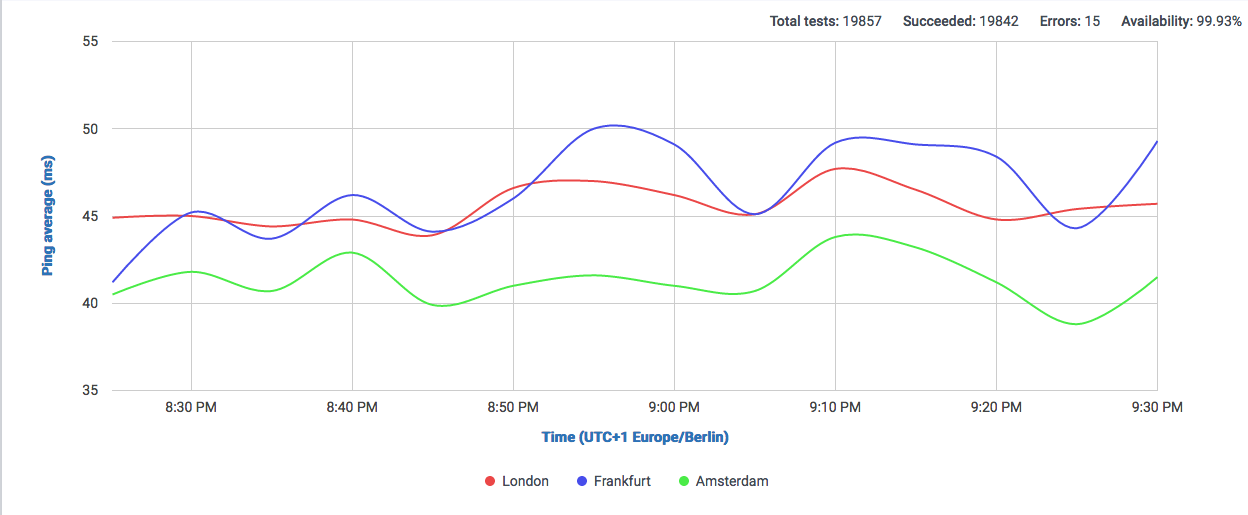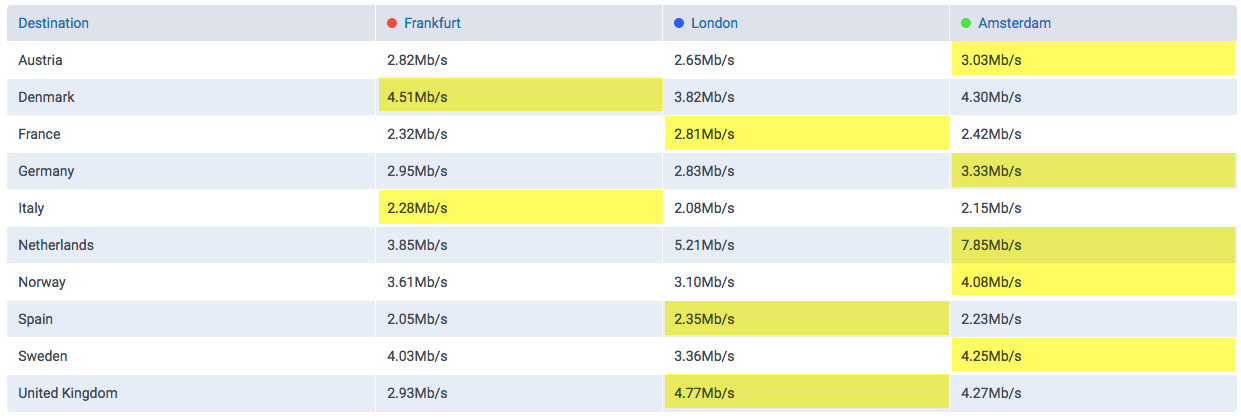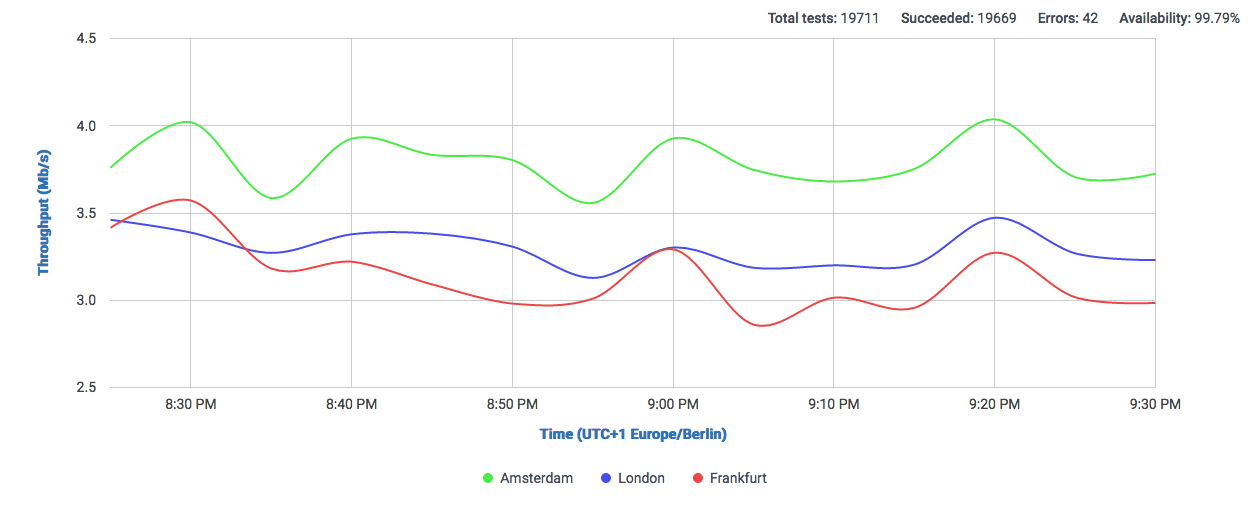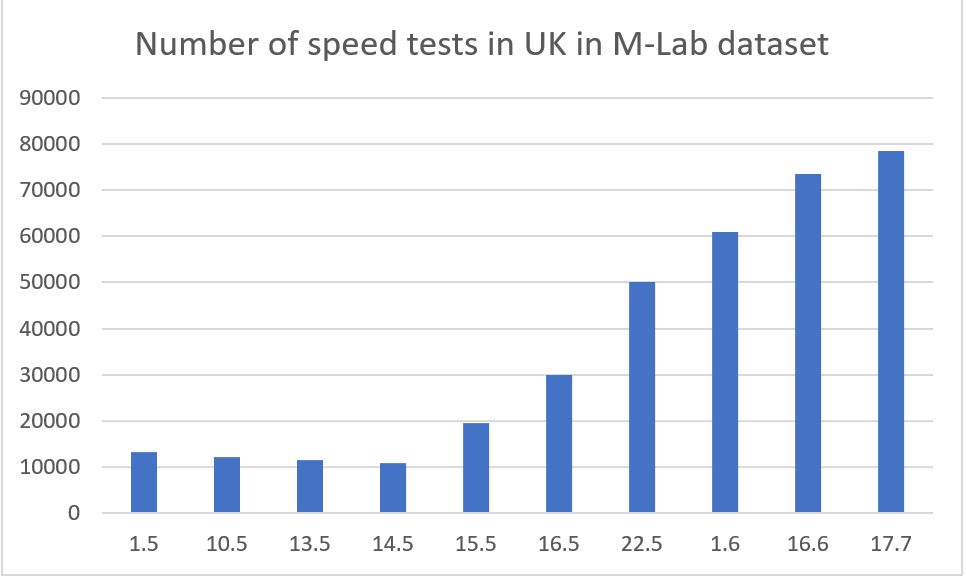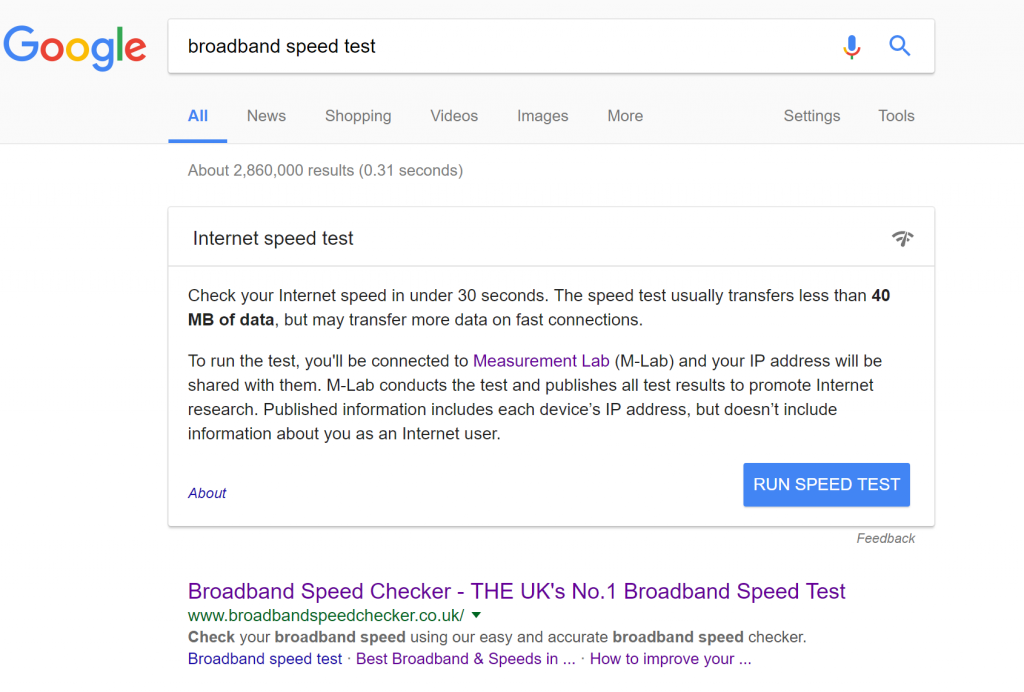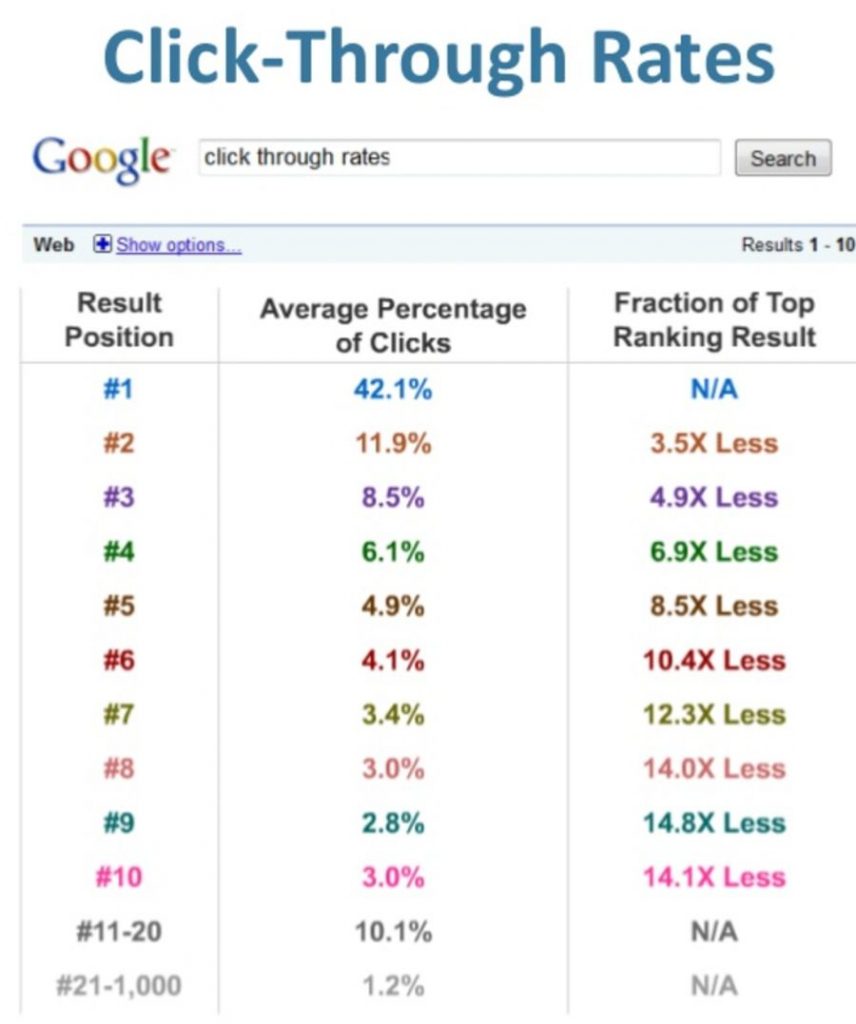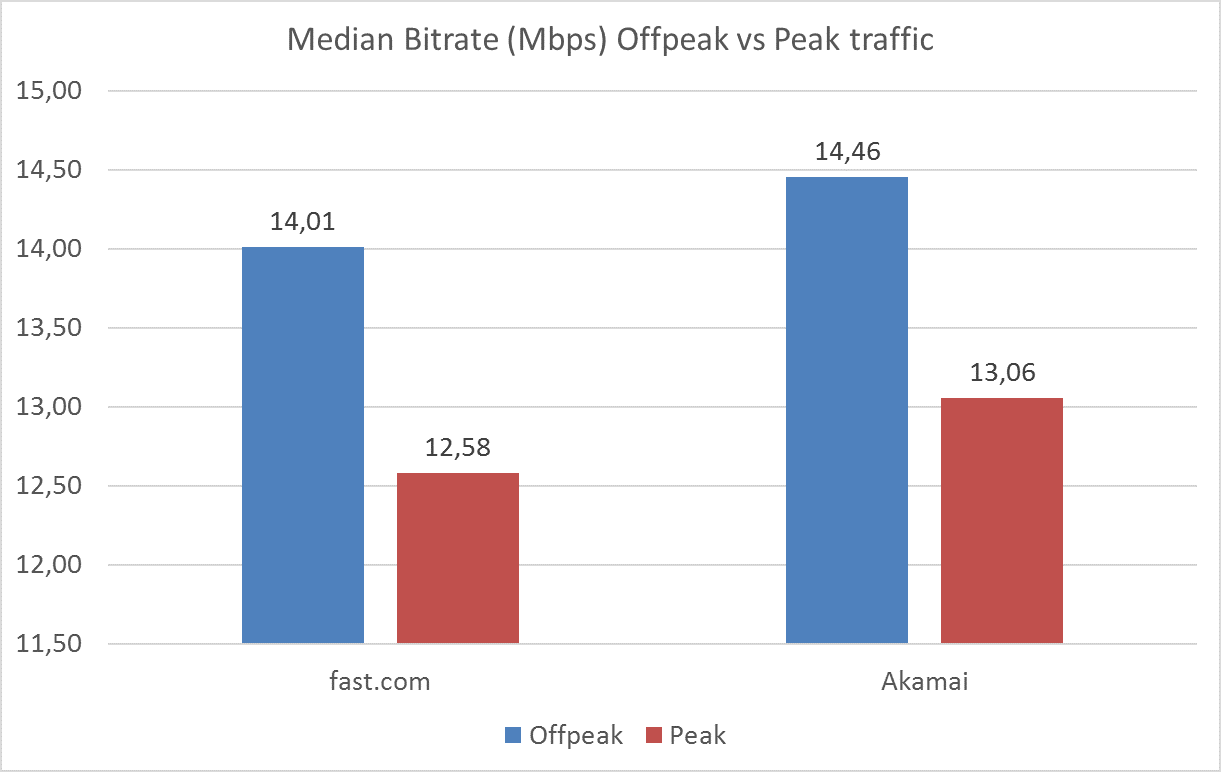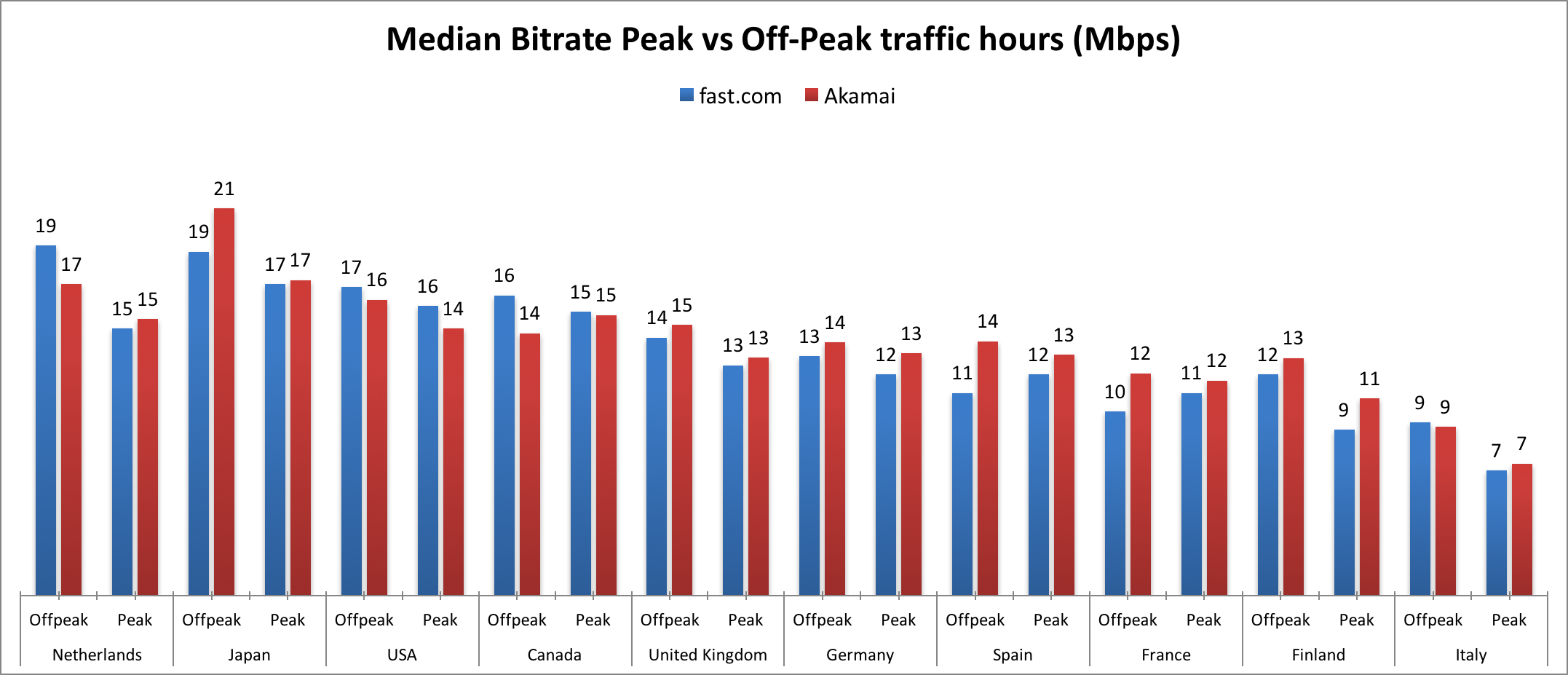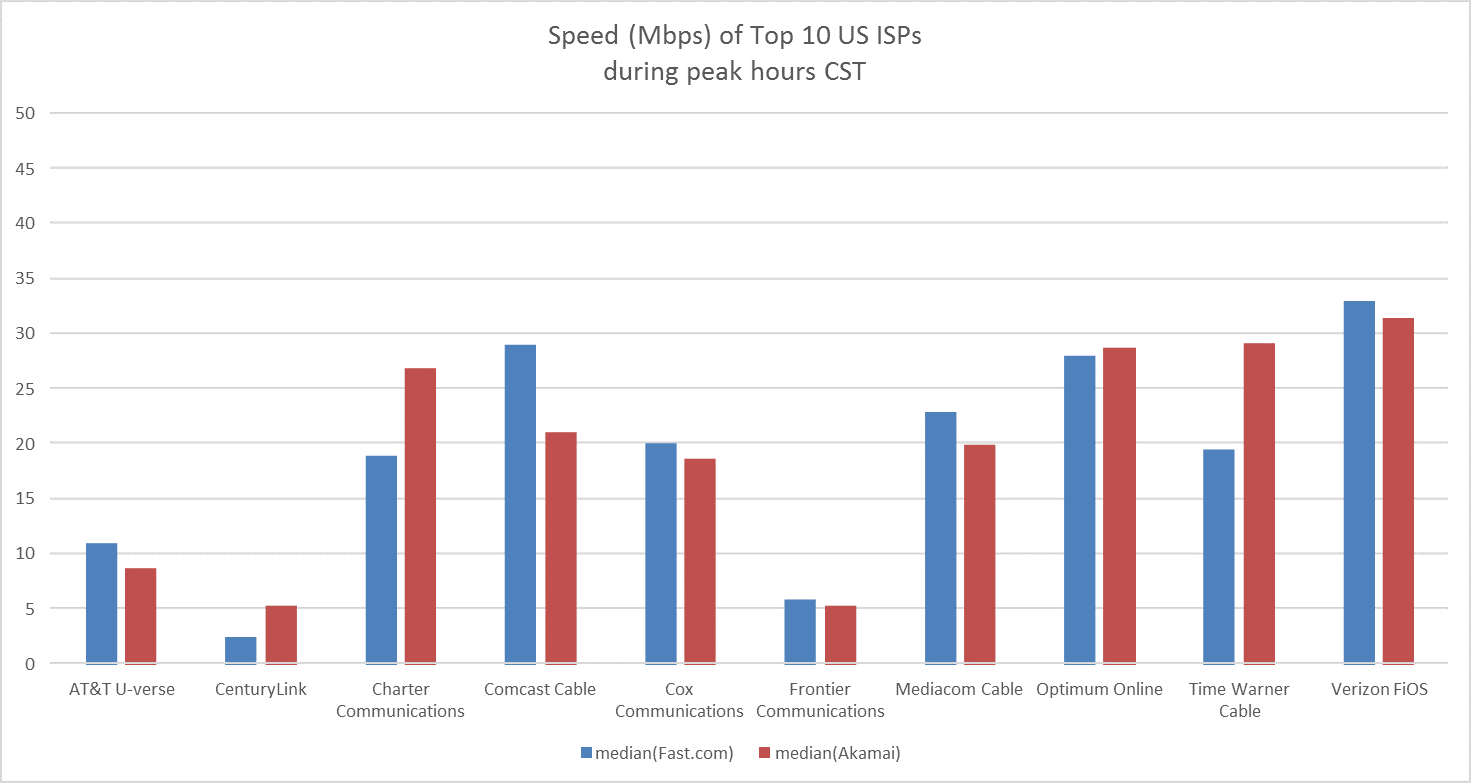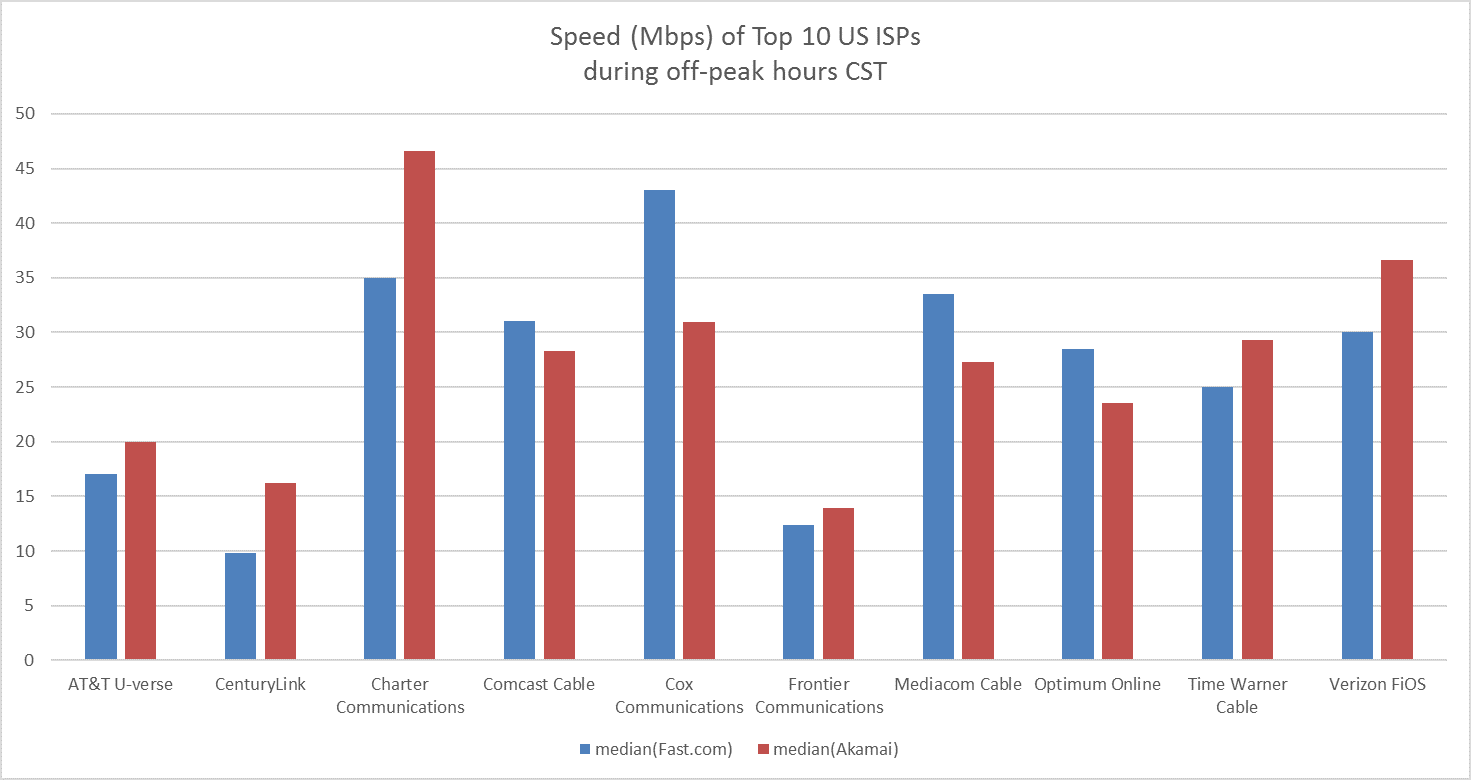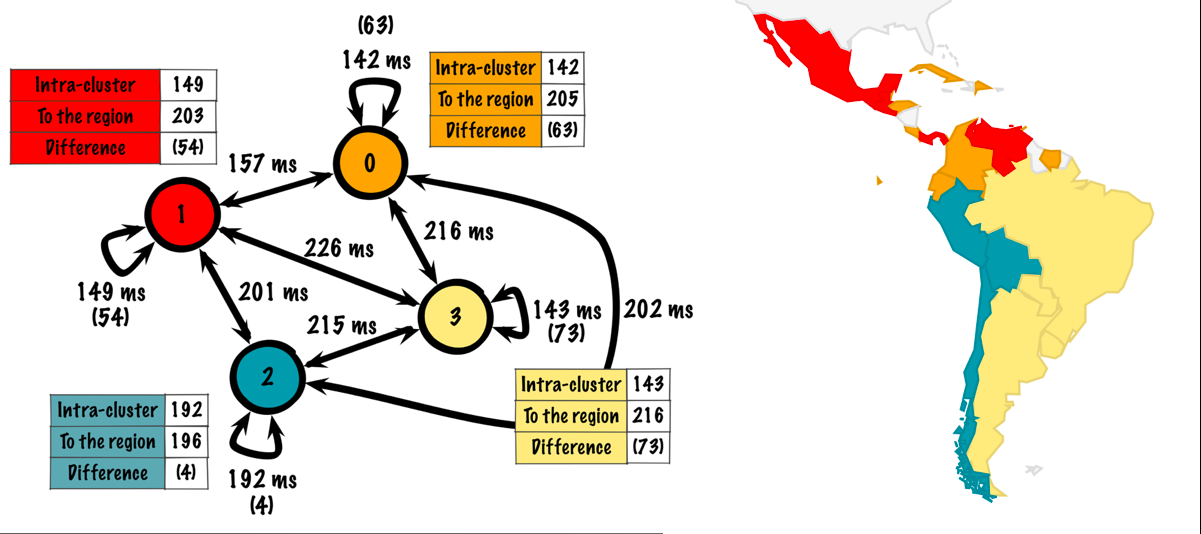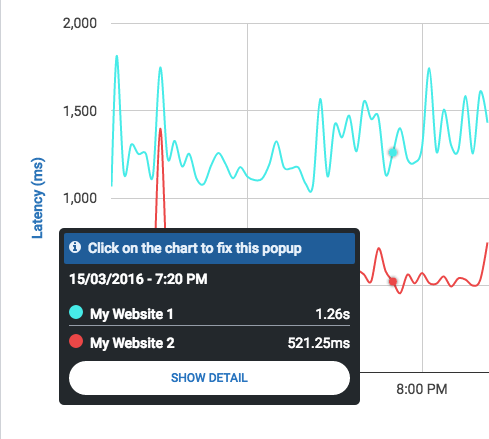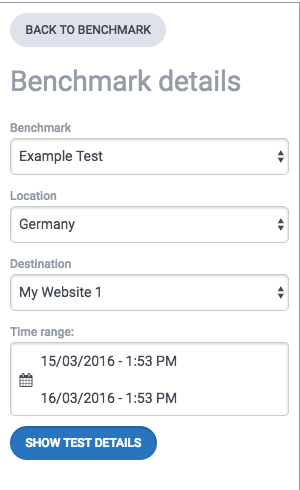Summary
In this analysis of speed test results taken in countries in the Middle East during February 2019 we compare download speeds between countries, between MNOs & ISPs within each country and also compare how performance varies across different subsidiaries of the major Telecom Groups.
Key Insights
-
Middle East average download speed: 7.3 Mb/s
-
Turkey, Qatar, Bahrain and Jordan have above average download speeds
-
Egypt and Kuwait have the slowest download speeds
-
Vodafone in Qatar, Orange in Jordan and Vodafone Turkey are the fastest amongst MNOs & ISPs with download speeds over 10 Mb/s
-
Inconsistent CDN peering impacts user experience
Country Ranking
Regional average download speed is 7.3 Mb/s.
Turkey (10.7 Mb/s), Qatar (9.0 Mb/s), Bahrain (8.4 Mb/s) and Jordan (8.1 Mb/s) top the chart with above Middle East average download speeds. Egypt (4.4 Mb/s) and Kuwait (5.7 Mb/s) have the poorest performance in our tests. These speeds are represented in the following chart.
How Telecom Groups Perform in Different Countries
There are a number of international MNOs & ISPs that offer services in more than one Middle East country:
| Telecom Group | Number of Countries |
Countries |
|
Batelco |
2 |
Bahrain and Jordan |
|
Etisalat |
3 |
Egypt, Saudi Arabia and United Arab Emirates |
|
Link.Net |
2 |
Egypt and Jordan |
|
Ooredoo |
3 |
Kuwait, Oman and Qatar |
|
Orange |
2 |
Egypt and Jordan |
|
STC / Viva |
3 |
Bahrain, Kuwait and Saudi Arabia |
|
Vodafone |
3 |
Egypt, Qatar and Turkey |
|
Zain |
4 |
Bahrain, Jordan, Kuwait and Saudi Arabia |
Our next chart superimposes the average speed for each country with the speeds for each Telecom Group so that we can see which Groups produce above or below average in each country that they operate in. Each country is given a unique colour in the following chart to allow a visual comparison of speeds for different Telecom Groups in each country.
Most Telecom Groups outperform the average in each country with the following exceptions:
-
Batelco in Jordan
-
Link.net in Jordan and Egypt
-
Ooredoo in Qatar
-
Vodafone in Turkey
-
Zain in Saudi Arabia, Bahrain and Kuwait
Top MNOs & ISPs in each Country
In this section we look at how the most popular MNOs & ISPs perform in each country. The charts are in order of the fastest available download speeds with a consistent scale of up to 16 Mb/s to make comparison easier.
SpeedChecker Measurement Methodology
Data Collection
SpeedChecker collected data in all countries during the same period in February 2019 to ensure a fair comparison. We gathered many data points using the crowd sourced data samples collected in the field on mobile devices. During the time the data collection took place, SpeedChecker received over 60,000 data samples and the included statistics and analysis are based on this dataset.
It was important for us to not only measure the real speeds as experienced by the user but also to ensure that we measured to the same point to ensure a fair comparison. For this we included only measurements to one server in Amsterdam. Read the following section “Choice of measurement server” for more about this method.
Choice of measurement server
Every measurement methodology differs in the selection of measured server infrastructure. Some methodologies focus on on-net servers hosted in telecom premises and others focus off-net. SpeedChecker believes off-net servers’ measurements are representing real user experience better than on-net as most of the content accessible by end users lies off-net. Most of the content these days is hosted on CDN networks and the best way to measure most relevant download metrics is to choose popular CDN networks. However, as we learn in this report, not all ISPs and MNOs connect to CDNs directly (or peer) and that has major implications on performance.
One of the main advantages of CDN peering is to improve connection time and download speeds by bringing the content closer to the end user. Before we could analyse the speed results, we considered how widespread peering was and discovered that there was a variation between 0 and 100% use of local servers.
The chart above shows the percentage of results from each country that are routed via local Middle East Servers, Europe or Asia. Bahrain, Qatar and Oman are all above 50% Middle East server use with Bahrain at 100%. United Arab Emirates and Egypt have a very low use of local servers. In our case we have used the most popular CDN – Cloudflare.
Speeds achieved to local servers were, on average, around 30% faster than speeds routed via European servers but this is not available to the majority of users. Because of the unbalanced availability of this CDN peering we chose to limit our analysis to results from one particular server based in Amsterdam, Europe.
-
No country will have an unfair advantage as would be the case if local servers were used
-
The majority of content is still hosted in Europe which means the download speeds reflect actual usage for most of the content downloaded by the end user
It is acknowledged that the operators in some countries that are peering with CDNs will achieve better results than those shown in this report.
